Completed: TECORE XIII - The Rise of Dave
Forum rules
Please label new threads with the following to indicate the type of thread:
COMPLETED: a completed trip
IN PROGRESS: a trip currently in progress
PLANNING: researching or recruiting
Please feel free to utilize the trail rating article.
Please label new threads with the following to indicate the type of thread:
COMPLETED: a completed trip
IN PROGRESS: a trip currently in progress
PLANNING: researching or recruiting
Please feel free to utilize the trail rating article.
20 posts
• Page 1 of 1
So after 6 years, riding shotgun or in a pick-up truck to TECORE, he finally got his own TB on the trail! I didn't get many pics so I'll post a couple and wait for the others who got more and better pics.
IF THE FISH STOP BITING... HUNT FOR SHELLS!!!
-

NC_IslandRunner - Moderator
- Posts: 3021
- Joined: Fri Dec 03, 2010 4:49 pm
- Location: NC, Sanford
- Name: Rory
- Vehicle Year: 2004
- Vehicle: Chevrolet TrailBlazer
- DriveTrain: 4WD w/ G80
- Rank: Offroad Rated
It is 5am and we are just getting in. Battled heat issues all the way home so a major cleaning is needed and looking at potential upgrade options. I am off to bed, I will have Patrick create an account and get pictures loaded asap.
Twenty years from now you will be more disappointed by the things that you didn’t do than by the ones you did do.
So throw off the bowlines. Sail away from the safe harbor. Catch the trade winds in your sails. Explore. Dream. Discover.
- Mark Twain
--Build--
So throw off the bowlines. Sail away from the safe harbor. Catch the trade winds in your sails. Explore. Dream. Discover.
- Mark Twain
--Build--
-

Regulator1175 - Veteran
- Posts: 1047
- Joined: Wed Mar 17, 2010 3:48 pm
- Location: IN, Warsaw
- Name: Matthew McClelland
- Vehicle Year: 2002
- Vehicle: GMC Envoy
- DriveTrain: 4WD w/ G80
- Rank: Extreme Offroader
Glad everyone made it through and back home! Can't wait for some pictures!
- tsmith1156
- Off-Roader
- Posts: 219
- Joined: Thu May 02, 2013 6:04 pm
- Location: Batavia, Ohio
- Name: Tyler Smith
- Vehicle Year: 2005
- Vehicle: Chevrolet TrailBlazer
- DriveTrain: 4WD
Regulator1175 wrote:It is 5am and we are just getting in. Battled heat issues all the way home so a major cleaning is needed and looking at potential upgrade options. I am off to bed, I will have Patrick create an account and get pictures loaded asap.
Bummer! Glad you made it though.
I also struggled with keeping the temps low. The whole drive home I was thinking about this thread: viewtopic.php?f=27&t=3955
Think I may have identified my next few upgrades thanks to Jon A.
-

Trail X - Founder
- Posts: 9925
- Joined: Mon Sep 07, 2009 10:22 pm
- Location: VA, Roanoke
- Name: James Downing
- Vehicle Year: 2005
- Vehicle: Chevrolet TrailBlazer
- DriveTrain: 4WD w/ Aftermarket Locker
- Rank: Expedition Guide
Everyone made it up the big rock step (except me, who didn't attempt it) this year. I was surprised to even see open, or inoperable G80 diffs making it up.
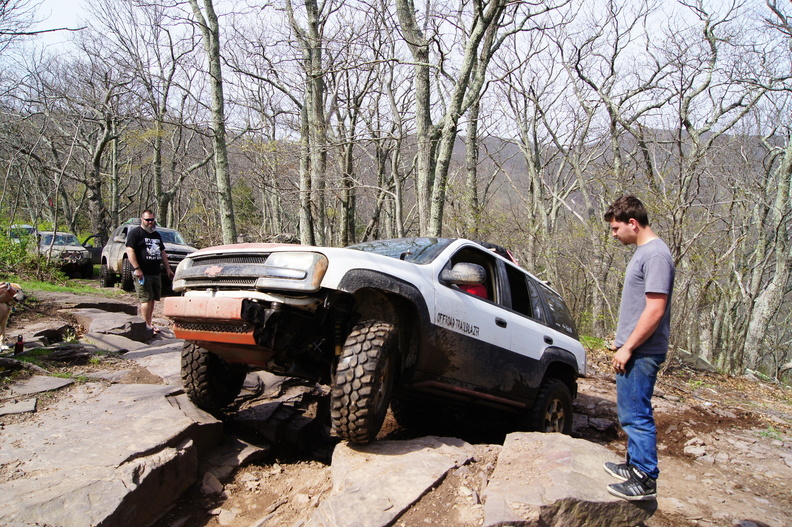

Dave and Joe went up a different line with its own challenges.

And Dave left a little bit of his diff on this rock:
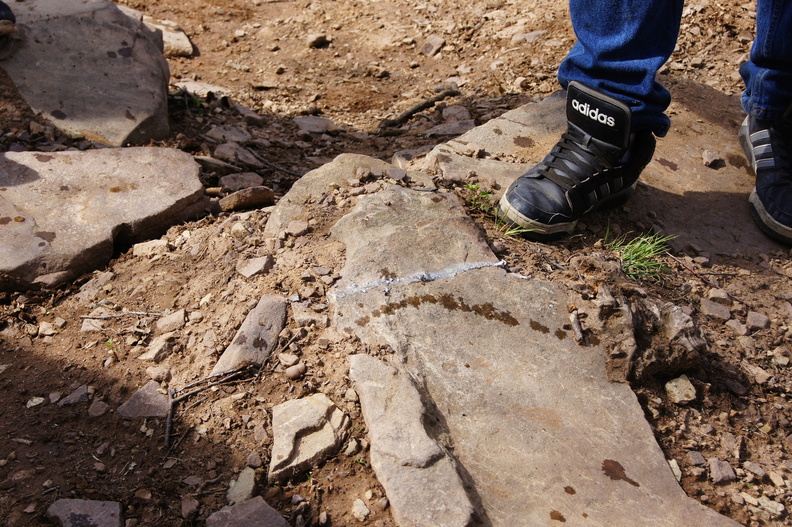
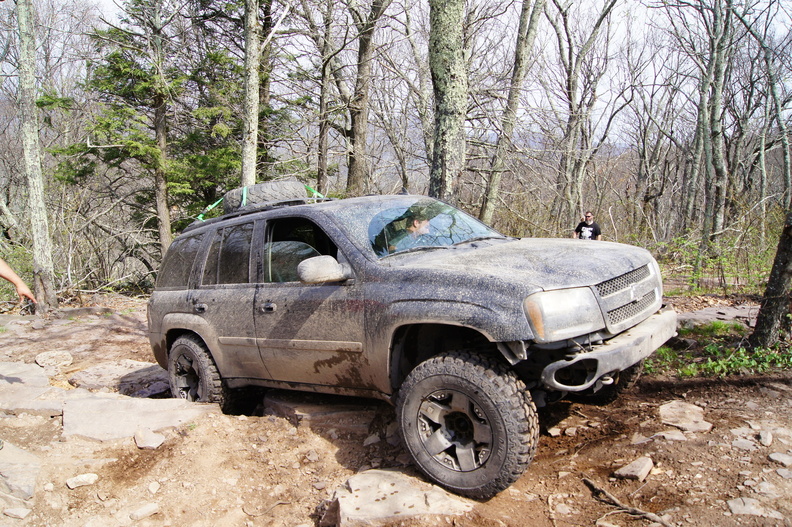
More pics later.


Dave and Joe went up a different line with its own challenges.

And Dave left a little bit of his diff on this rock:


More pics later.
-

Trail X - Founder
- Posts: 9925
- Joined: Mon Sep 07, 2009 10:22 pm
- Location: VA, Roanoke
- Name: James Downing
- Vehicle Year: 2005
- Vehicle: Chevrolet TrailBlazer
- DriveTrain: 4WD w/ Aftermarket Locker
- Rank: Expedition Guide
On the trip down my engine ran 195 and my trans 165. Cooling wasn't an issue the vast majority of the trip. My trans peaked at 207. Running long run road hard in high, my engine was in the 220s.
Going home however, the first 30 miles or so uphill on 81, my engine was in the 220s and the trans was 200. I had to turn the AC off and roll the windows down. After an hour or so taking it easy going home, I finally got the engine down to 210 and the trans to 180. Once we got back into PA I was able to run the AC on low and keep the engine in the 2-teens. My trans cooler was packed with little fragments of black leaves from all the mud holes and the condenser and radiator yielded lots of mud while being blasted out with the hose. All those mud holes on that new trail were to blame. I wish I didn't just drop $120 on a new radiator. I'd be more interested in a higher capacity unit.
Going home however, the first 30 miles or so uphill on 81, my engine was in the 220s and the trans was 200. I had to turn the AC off and roll the windows down. After an hour or so taking it easy going home, I finally got the engine down to 210 and the trans to 180. Once we got back into PA I was able to run the AC on low and keep the engine in the 2-teens. My trans cooler was packed with little fragments of black leaves from all the mud holes and the condenser and radiator yielded lots of mud while being blasted out with the hose. All those mud holes on that new trail were to blame. I wish I didn't just drop $120 on a new radiator. I'd be more interested in a higher capacity unit.
Chevy Power!
Long live the Republic
"Violence is not always evil. The judicious use of violence and those willing to use it without hesitation is often all that stands between wolves and sheep."
Build Thread
Long live the Republic
"Violence is not always evil. The judicious use of violence and those willing to use it without hesitation is often all that stands between wolves and sheep."
Build Thread
-

dvanbramer88 - Lifer
- Posts: 2283
- Joined: Tue Jul 05, 2011 3:12 pm
- Location: PA, Bristol
- Name: Dave
- Vehicle Year: 2002
- Vehicle: Chevrolet TrailBlazer
- DriveTrain: 4WD
- Rank: Trail Ready
Also about 30 miles from home my driver front wheel bearing started making horrible grinding/popping/thumping noises. At the time I wasn't sure if it was an axle, the diff, or a u joint. I pulled over to shake the truck down. Nothing obvious. Got home, jacked it up, nothing was loose and nothing made noise by hand. I slapped in my spare wheel bearing quickly, and everything was fine after.
Oh, and I got 18.2 MPG on the trip down and 18.5 mpg on the way home. We did approximately 90 miles on location and I burned 11 gallons. 8mpg Wheeling ain't bad, better then the 7 Mpg the pickup got crawling on its last Tecore.
Oh, and I got 18.2 MPG on the trip down and 18.5 mpg on the way home. We did approximately 90 miles on location and I burned 11 gallons. 8mpg Wheeling ain't bad, better then the 7 Mpg the pickup got crawling on its last Tecore.
Chevy Power!
Long live the Republic
"Violence is not always evil. The judicious use of violence and those willing to use it without hesitation is often all that stands between wolves and sheep."
Build Thread
Long live the Republic
"Violence is not always evil. The judicious use of violence and those willing to use it without hesitation is often all that stands between wolves and sheep."
Build Thread
-

dvanbramer88 - Lifer
- Posts: 2283
- Joined: Tue Jul 05, 2011 3:12 pm
- Location: PA, Bristol
- Name: Dave
- Vehicle Year: 2002
- Vehicle: Chevrolet TrailBlazer
- DriveTrain: 4WD
- Rank: Trail Ready
Glad y'all made it through good. Sucks I could not swing it.
they've always worked for me.
-

HARDTRAILZ - Moderator
- Posts: 6342
- Joined: Sat Sep 12, 2009 1:49 am
- Location: IN, Batesville
- Name: Kyle
- Vehicle Year: 2006
- Vehicle: Chevrolet TrailBlazer
- DriveTrain: 4WD w/ Aftermarket Locker
- Rank: Extreme Offroader
HARDTRAILZ wrote:Glad y'all made it through good. Sucks I could not swing it.
Thanks Kyle, we missed your pickled green beans!
IF THE FISH STOP BITING... HUNT FOR SHELLS!!!
-

NC_IslandRunner - Moderator
- Posts: 3021
- Joined: Fri Dec 03, 2010 4:49 pm
- Location: NC, Sanford
- Name: Rory
- Vehicle Year: 2004
- Vehicle: Chevrolet TrailBlazer
- DriveTrain: 4WD w/ G80
- Rank: Offroad Rated
Had a great time guys! the 07 definitely impressed me this weekend. Glad to hear everyone made it home alright! I myself did too but once i got home i have an abs issue where it kicks in every time im hitting the brakes and hit 10mph. No worries tho ill get it fixed! cant wait to see all these pics everyone got i myself got some decent ones but am trying to sort through them still
- beachedwhale96
- Cruiser
- Posts: 14
- Joined: Thu Apr 06, 2017 11:01 am
- Name: joe rodick
- Vehicle Year: 2003
- Vehicle: Chevrolet Trailblazer EXT
- DriveTrain: 4WD w/ G80
The last time I had that issue was a busted ABS wire and dying hub.
they've always worked for me.
-

HARDTRAILZ - Moderator
- Posts: 6342
- Joined: Sat Sep 12, 2009 1:49 am
- Location: IN, Batesville
- Name: Kyle
- Vehicle Year: 2006
- Vehicle: Chevrolet TrailBlazer
- DriveTrain: 4WD w/ Aftermarket Locker
- Rank: Extreme Offroader
I don't really want to rain on anyone's parade here but the stock radiator can MORE than handle the loads we put on these engines.
A couple years back, when I replaced my engine, I ended up installing it the way it came and it apparently had a failing thermostat.
While heading up into the mountains for a weekend trip, my alarm on torque started going off and I was at 235 degrees. I parked it immediately and simply waited. I walked down to the gas station and bought a couple gallons of water, then added one of them to my overflow tank. I was only a few miles from the house up there, so I limped it there.
The next morning, I diagnosed that it was the thermostat and since I had no other vehicle handy, I simply removed it and put everything back together. I went and got a new one but the engine barely topped 100 degrees. So, on the way back, I tried to get it up to operating temperature. I was worried about doing so since the coolant was mostly water, but I had some spare full jugs just in case I started boiling over.
I drove it HARD. It was never below 3000 RPM, I had to stay below 30 as well so I kept it in low, and the temp barely climbed. I decided to head up to the point, a relatively gradual climb but a climb up to 10k ft nonetheless.
I saw my greatest temp change at about 8k, but it never topped 160 degrees no matter what I did and even then, once it returned to a lower RPM, the temp plummeted.
I never got it to operating temperature, and I felt guilty for driving it that way with the new motor.
Once I was back home here on the plains, I did some experimenting and found that if you modify the ring on your failed thermostat by cutting a wide pie slice out of it on one side, the engine would get to 200 degrees eventually. Two pie slices cut directly across from each other yields 160 degrees and lower with normal driving, of course.
The restriction is the thermostat, just like usual, so if you're having issues cooling, I suggest a lower calibrated thermostat, if available.
A couple years back, when I replaced my engine, I ended up installing it the way it came and it apparently had a failing thermostat.
While heading up into the mountains for a weekend trip, my alarm on torque started going off and I was at 235 degrees. I parked it immediately and simply waited. I walked down to the gas station and bought a couple gallons of water, then added one of them to my overflow tank. I was only a few miles from the house up there, so I limped it there.
The next morning, I diagnosed that it was the thermostat and since I had no other vehicle handy, I simply removed it and put everything back together. I went and got a new one but the engine barely topped 100 degrees. So, on the way back, I tried to get it up to operating temperature. I was worried about doing so since the coolant was mostly water, but I had some spare full jugs just in case I started boiling over.
I drove it HARD. It was never below 3000 RPM, I had to stay below 30 as well so I kept it in low, and the temp barely climbed. I decided to head up to the point, a relatively gradual climb but a climb up to 10k ft nonetheless.
I saw my greatest temp change at about 8k, but it never topped 160 degrees no matter what I did and even then, once it returned to a lower RPM, the temp plummeted.
I never got it to operating temperature, and I felt guilty for driving it that way with the new motor.
Once I was back home here on the plains, I did some experimenting and found that if you modify the ring on your failed thermostat by cutting a wide pie slice out of it on one side, the engine would get to 200 degrees eventually. Two pie slices cut directly across from each other yields 160 degrees and lower with normal driving, of course.
The restriction is the thermostat, just like usual, so if you're having issues cooling, I suggest a lower calibrated thermostat, if available.
Bravada G80 3.73 converted to selectable 4wd.
-

KingBird - Trail-Blazer
- Posts: 411
- Joined: Sat Mar 22, 2014 11:30 pm
- Location: Lubbock Texas
- Name: Brian
- Vehicle Year: 2002
- Vehicle: Other GMT360/370
- DriveTrain: 4WD w/ G80
KingBird wrote:I don't really want to rain on anyone's parade here but the stock radiator can MORE than handle the loads we put on these engines.
A couple years back, when I replaced my engine, I ended up installing it the way it came and it apparently had a failing thermostat.
While heading up into the mountains for a weekend trip, my alarm on torque started going off and I was at 235 degrees. I parked it immediately and simply waited. I walked down to the gas station and bought a couple gallons of water, then added one of them to my overflow tank. I was only a few miles from the house up there, so I limped it there.
The next morning, I diagnosed that it was the thermostat and since I had no other vehicle handy, I simply removed it and put everything back together. I went and got a new one but the engine barely topped 100 degrees. So, on the way back, I tried to get it up to operating temperature. I was worried about doing so since the coolant was mostly water, but I had some spare full jugs just in case I started boiling over.
I drove it HARD. It was never below 3000 RPM, I had to stay below 30 as well so I kept it in low, and the temp barely climbed. I decided to head up to the point, a relatively gradual climb but a climb up to 10k ft nonetheless.
I saw my greatest temp change at about 8k, but it never topped 160 degrees no matter what I did and even then, once it returned to a lower RPM, the temp plummeted.
I never got it to operating temperature, and I felt guilty for driving it that way with the new motor.
Once I was back home here on the plains, I did some experimenting and found that if you modify the ring on your failed thermostat by cutting a wide pie slice out of it on one side, the engine would get to 200 degrees eventually. Two pie slices cut directly across from each other yields 160 degrees and lower with normal driving, of course.
The restriction is the thermostat, just like usual, so if you're having issues cooling, I suggest a lower calibrated thermostat, if available.
Water at 15psi boils at 250F, so normal engine temps aren't a problem for just water. However, water also has right at twice the thermal capacity of straight coolant, and 50/50 mix has about 3/4 the thermal capacity of just water. So yes, on a clean radiator (no mud dried into the fins, reducing the transfer properties), filled with mostly or all water, you'll have like double the cooling capacity of a 50/50 setup on a dirty rad, and you'll have 25% more cooling capacity than a similarly clean rad with 50/50 in it.
Also, the higher RPM aides in cooling, because it flows a lot more coolant than 1700-1800rpm at cruise. Hell, with the A/C on, on like an 80 degree day, I run 205F in OD on the interstate and 195 in 3rd (That's with having driven through a lot of hood-deep muddy water since I've sprayed out my rad, which I need to do). It's all about the amount of heat/load that's put into the coolant in the time it goes through the engine, especially on a non-working thermostat.
Mike
- bartonmd
- Moderator
- Posts: 4469
- Joined: Wed Sep 09, 2009 9:35 am
- Location: IN, Indianapolis
- Name: Mike
- Vehicle Year: 2007
- Vehicle: Chevrolet TrailBlazer
- DriveTrain: 4WD w/ G80
- Rank: Offroad Rated
 There's definitely some benefit in a lower temp thermostat, but as Mike said, that's not the only variable here. Long climbs in the mountains aren't too much trouble for me. I have trouble on the interstate at 70-80 mph because my transmission wants to come out of lockup, the engine rpms are low, and the engine is at a nearly constant 80%-100% output just to keep up with wind resistance. Add a hill in there and that's when temps can spike.
There's definitely some benefit in a lower temp thermostat, but as Mike said, that's not the only variable here. Long climbs in the mountains aren't too much trouble for me. I have trouble on the interstate at 70-80 mph because my transmission wants to come out of lockup, the engine rpms are low, and the engine is at a nearly constant 80%-100% output just to keep up with wind resistance. Add a hill in there and that's when temps can spike.Anyways...

-

Trail X - Founder
- Posts: 9925
- Joined: Mon Sep 07, 2009 10:22 pm
- Location: VA, Roanoke
- Name: James Downing
- Vehicle Year: 2005
- Vehicle: Chevrolet TrailBlazer
- DriveTrain: 4WD w/ Aftermarket Locker
- Rank: Expedition Guide
Looks like you guys had a good time... from the pics I've seen... why haven't more made it in here!?!?!
build thread
All things in moderation, including moderation.
Some people never go crazy... what truly horrible lives they must lead
All things in moderation, including moderation.
Some people never go crazy... what truly horrible lives they must lead
-

v7guy - Moderator
- Posts: 3712
- Joined: Wed Mar 09, 2011 10:17 pm
- Location: NY, long island
- Name: Jason
- Vehicle Year: 2004
- Vehicle: Chevrolet TrailBlazer
- DriveTrain: 4WD
- Rank: Offroad Rated
Because we're lazy I guess. Didn't Dave have a ton of pictures on his camera? Dave sucks.
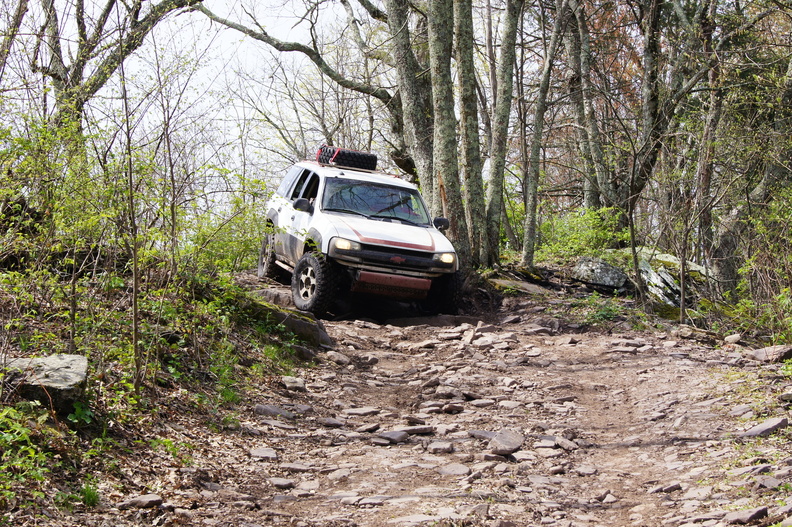
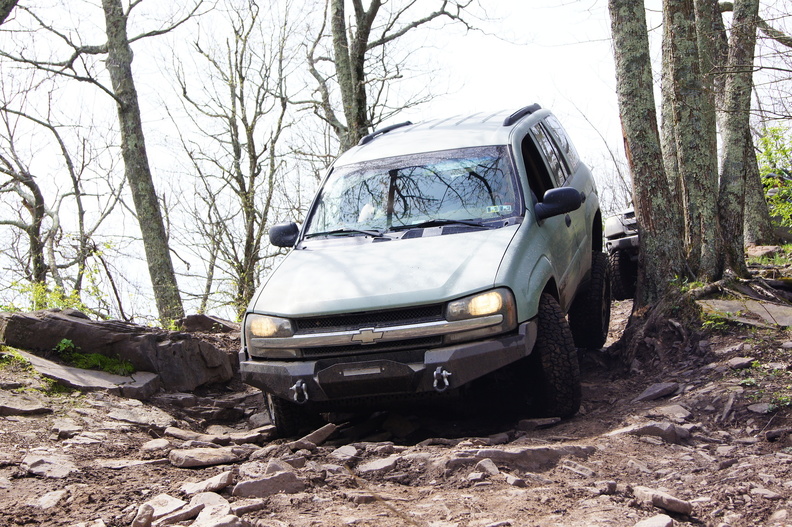

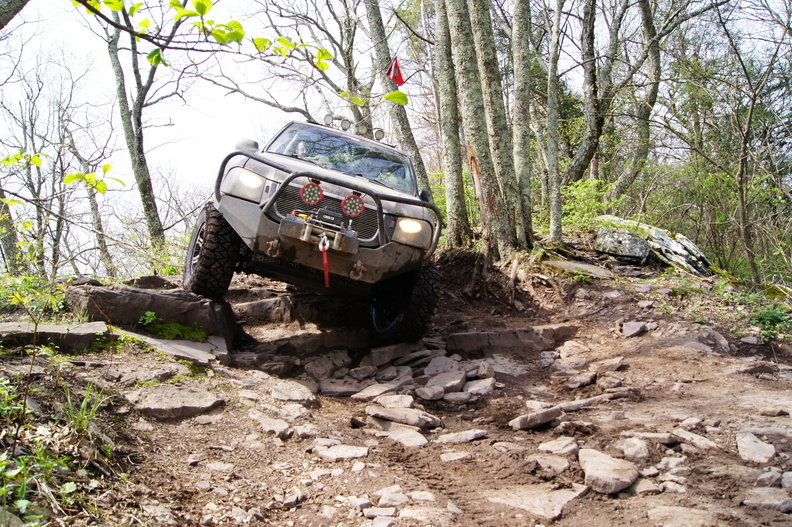
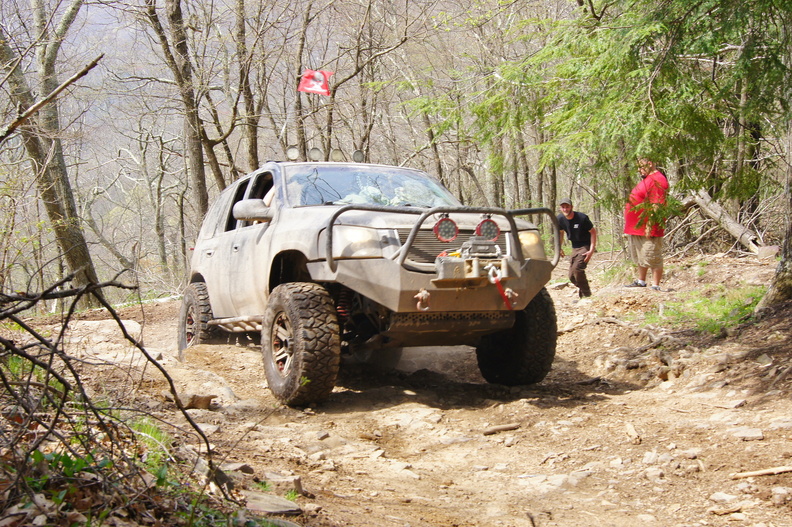

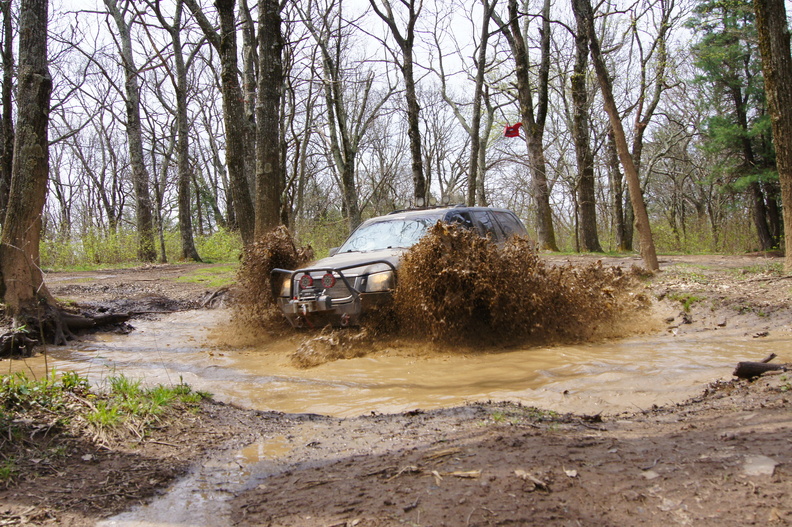
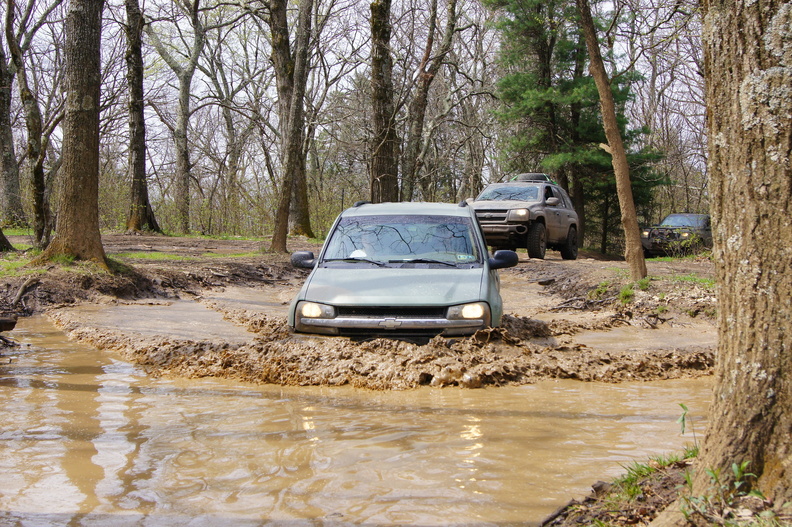

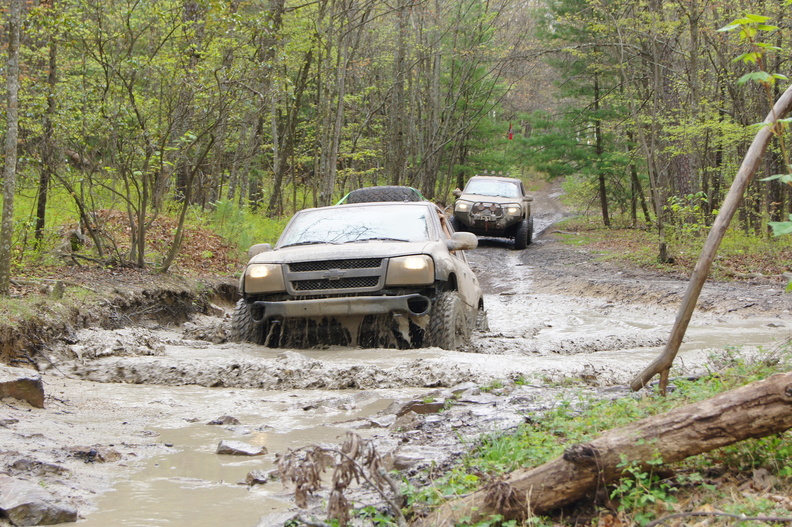
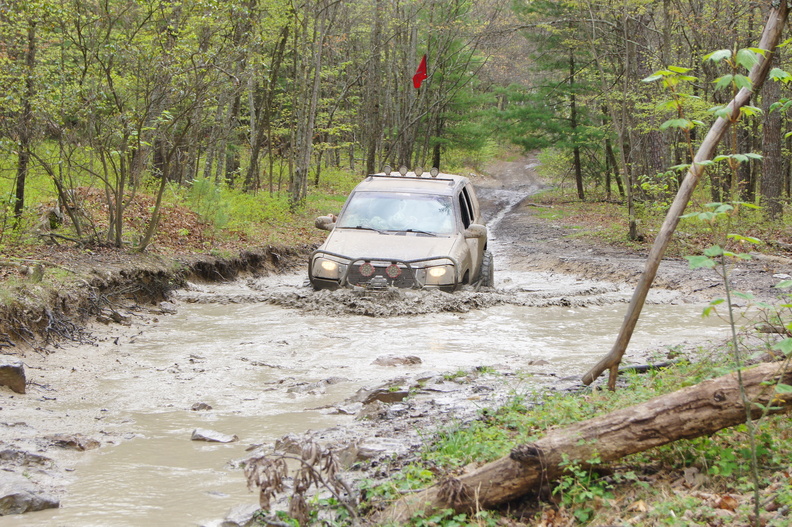

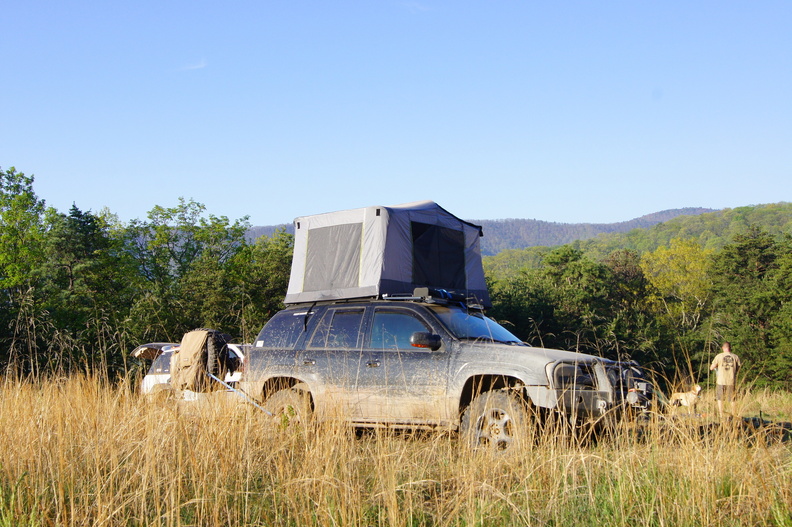
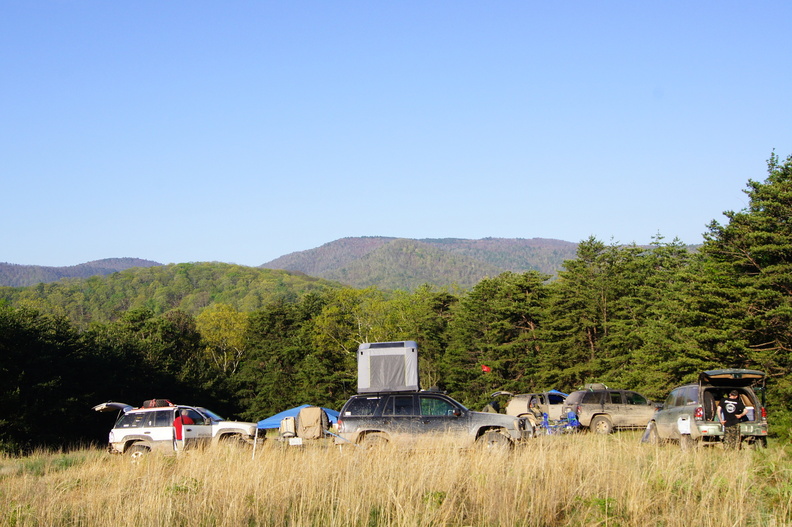














-

Trail X - Founder
- Posts: 9925
- Joined: Mon Sep 07, 2009 10:22 pm
- Location: VA, Roanoke
- Name: James Downing
- Vehicle Year: 2005
- Vehicle: Chevrolet TrailBlazer
- DriveTrain: 4WD w/ Aftermarket Locker
- Rank: Expedition Guide
What's the current preferred method for posting pics these days? I'm having trouble with Photobucket recently because it sucks, and obviously the files from my DSLR are too big to upload here directly. What's a good image size to upload directly? Or what's the new preferred image hosting site?
Chevy Power!
Long live the Republic
"Violence is not always evil. The judicious use of violence and those willing to use it without hesitation is often all that stands between wolves and sheep."
Build Thread
Long live the Republic
"Violence is not always evil. The judicious use of violence and those willing to use it without hesitation is often all that stands between wolves and sheep."
Build Thread
-

dvanbramer88 - Lifer
- Posts: 2283
- Joined: Tue Jul 05, 2011 3:12 pm
- Location: PA, Bristol
- Name: Dave
- Vehicle Year: 2002
- Vehicle: Chevrolet TrailBlazer
- DriveTrain: 4WD
- Rank: Trail Ready
What problems does photobucket give you, I never have issues?
IF THE FISH STOP BITING... HUNT FOR SHELLS!!!
-

NC_IslandRunner - Moderator
- Posts: 3021
- Joined: Fri Dec 03, 2010 4:49 pm
- Location: NC, Sanford
- Name: Rory
- Vehicle Year: 2004
- Vehicle: Chevrolet TrailBlazer
- DriveTrain: 4WD w/ G80
- Rank: Offroad Rated
photobucket has restricted 3rd party sharing unless your subscription is the $400+
-

djthumper - Moderator
- Posts: 2702
- Joined: Wed Mar 24, 2010 6:04 pm
- Location: NV, Las Vegas
- Name: Larry
- Vehicle Year: 2006
- Vehicle: Chevrolet TrailBlazer
- DriveTrain: 4WD
- Rank: Offroad Rated
That issue has yet to come up with me. I also keep all my photos backed up on a external hard drive and CD.
IF THE FISH STOP BITING... HUNT FOR SHELLS!!!
-

NC_IslandRunner - Moderator
- Posts: 3021
- Joined: Fri Dec 03, 2010 4:49 pm
- Location: NC, Sanford
- Name: Rory
- Vehicle Year: 2004
- Vehicle: Chevrolet TrailBlazer
- DriveTrain: 4WD w/ G80
- Rank: Offroad Rated
20 posts
• Page 1 of 1
